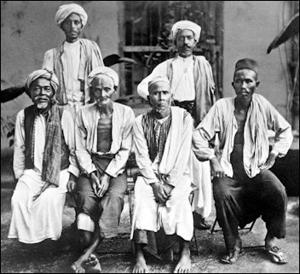
The spread of Islam in Indonesia is a significant chapter in the history of the archipelago, characterized by a complex interplay of trade, cultural exchange, and gradual conversion rather than outright coercion.
This examination explores the historical context of Islam’s arrival in Indonesia, the motivations behind conversion, and the extent to which coercion played a role in this process.
Historical Context: The Arrival of Islam in Indonesia
Islam is believed to have first arrived in Indonesia around the 13th century, primarily through trade routes established by Muslim merchants from Arabia and India. The earliest evidence of Islamic influence can be traced back to northern Sumatra, where the Samudera Pasai Sultanate emerged as one of the first Muslim states in the region.
The gravestone of Sultan Malik al-Salih, dated 1297, marks a significant point in Indonesian history, indicating the establishment of Islamic rule.
Unlike many regions where Islam spread through military conquest, the process in Indonesia was predominantly peaceful. Historians argue that the gradual nature of conversion was facilitated by trade relationships and cultural exchanges between Muslim traders and local populations.
Reasons for Conversion
- Economic Opportunities: One of the primary drivers for conversion was the economic benefits associated with being part of the Islamic community. Muslims often enjoyed better trade opportunities and were exempt from certain taxes imposed on non-Muslims. The establishment of Muslim trading networks allowed local populations to prosper economically by aligning themselves with Islam.
- Political Alliances: Conversion to Islam also provided political advantages. Local rulers who embraced Islam could strengthen their authority by forming alliances with powerful Muslim states and gaining legitimacy among their subjects. This was evident in regions like Java, where local leaders converted to Islam, leading their communities to follow suit.
- Cultural Exchange: The syncretic nature of Indonesian culture allowed for a blending of Islamic practices with local traditions. Many Indonesians adopted Islamic beliefs while retaining elements of their indigenous religions. This adaptability made conversion more appealing and less disruptive.
- Social Pressure: While many conversions were voluntary, social dynamics played a role in influencing individuals to convert. As influential figures within communities embraced Islam, their followers often felt compelled to do the same to maintain loyalty and cohesion within their social groups.
- Were Africans Forced to Convert to Islam? A Historical Examination
- Were Turks Forced to Convert to Islam? A Historical Examination
Conflicting Narratives: Coercion vs. Voluntary Conversion
The narrative surrounding Indonesian conversion to Islam is not uniform; it varies significantly across different regions and historical contexts:
- Voluntary Conversion: Many historians emphasize that most conversions occurred voluntarily due to economic and social incentives rather than through coercion. The gradual nature of this process suggests that many Indonesians embraced Islam willingly as they recognized its benefits.
- Limited Instances of Coercion: While voluntary conversion was predominant, there were instances where coercive measures were employed during periods of conflict or political upheaval. However, these instances were often localized and did not reflect a systematic policy of forced conversion across all Indonesian communities.
- Cultural Resistance: In some areas, traditional beliefs remained resilient against Islamic influences. Even as Islam spread, many communities retained their indigenous practices or blended them with Islamic teachings, demonstrating a complex relationship between faiths rather than outright abandonment of one for another.
- Were Persians Forced to Convert to Islam? A Historical Examination
- Were Albanians Forced to Convert to Islam? A Historical Examination
The Role of Trade and Cultural Exchange
The role of trade in facilitating the spread of Islam cannot be overstated. Muslim merchants established trade routes that connected Indonesia with other parts of the Islamic world, including Arabia and India:
- Trade Networks: The establishment of trade networks allowed for cultural exchanges that included not only goods but also ideas and religious beliefs. The interactions between Muslim traders and local populations fostered an environment conducive to conversion.
- Pilgrimages and Education: Increased contact with religious centers in the Middle East also played a significant role in shaping Indonesian Islam. The opening of the Suez Canal in 1869 facilitated travel for Indonesian pilgrims to Mecca, further strengthening ties between Indonesia and the broader Muslim world.
Conclusion
In conclusion, while there were instances where coercion may have played a role in specific contexts, the overall process of conversion to Islam in Indonesia was largely characterized by voluntary acceptance driven by economic incentives, political advantages, and cultural exchanges.
The gradual nature of this transformation reflects a complex interplay between adopting a new faith and maintaining cultural identity.
Understanding this historical context is crucial for appreciating contemporary Indonesian society’s diverse religious landscape today. As Indonesia continues to navigate its unique position within the global Muslim community, the legacy of its historical conversions remains relevant in discussions about national identity and cultural heritage.







